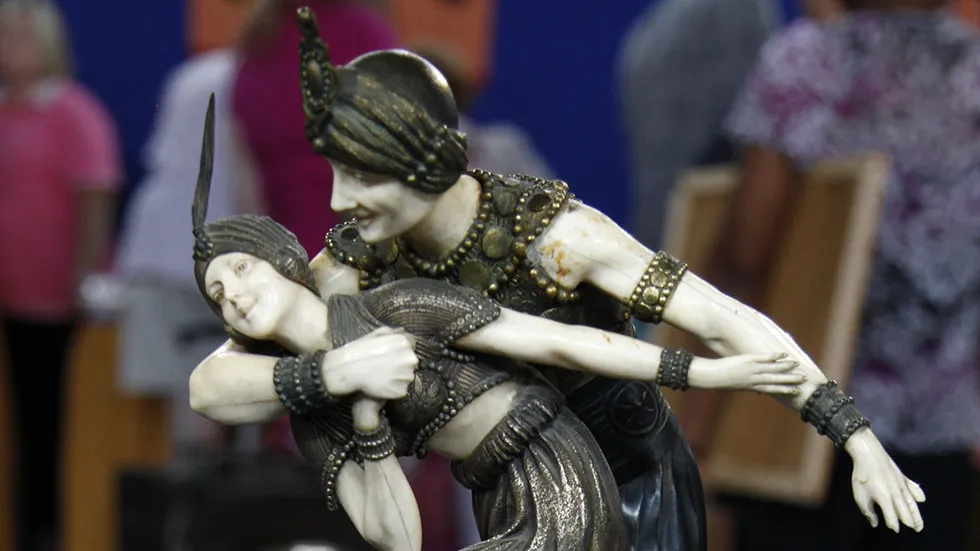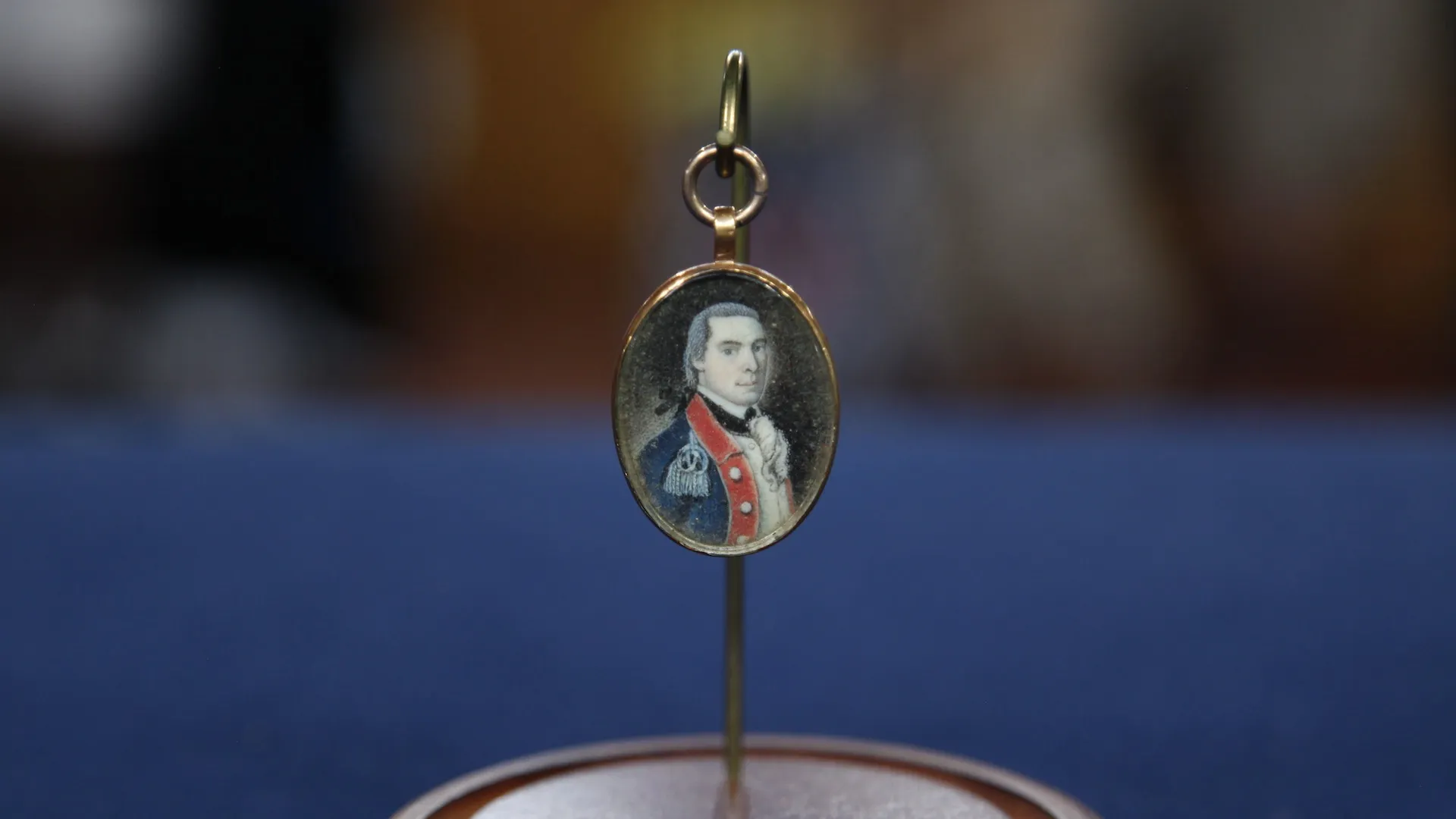Overview of Current Ivory Law
**Editor’s Note** — *Federal regulations governing the trade and ownership of elephant ivory and other animal-derived objects are under constant review and subject to change at any time. ANTIQUES ROADSHOW endeavors to monitor and report on such changes in a timely way; however, you should consult the website of the [U.S. Fish & Wildlife Service](https://www.fws.gov/law/endangered-species-act/) for the most up-to-date information on these topics.* The most recent addition to this article pertains to regulations governing [Walrus ivory](#walrus), at the bottom of the page.

Demetre Chiparus created this bronze, marble and ivory statue in the early 20th-century.
May 8, 2017
Originally published on: Jun 22, 2015
BY Ben Phelan
Of all the antique objects we appraise on ANTIQUES ROADSHOW, few elicit as big a viewer response as items that contain ivory. Almost all of the emails and letters we receive on the subject address in one way or another the legal questions that inevitably arise around ivory.

The import, export and sale of antiques containing ivory is highly regulated. This miniature portrait is oil on ivory, dating from the late 18th century.
There is an assumption in the general public that ivory is, at least in some circumstances, illegal, since the elephant species from which ivory is taken are endangered or threatened. But unless you regularly deal with ivory as part of your job, this assumption is often little more than a vague suspicion.
In fact, even expert ivory appraisers are often hazy on the law. This is through no fault of their own: The legal regime that regulates the trade in ivory is notoriously complex, arising from the intersection of federal statutory law, executive-branch orders, and the guidelines imposed by international conservation treaties. As animal populations fluctuate, so do the laws.
In an effort to help interested viewers stay informed about the state of ivory regulations, ANTIQUES ROADSHOW has worked with the U.S. Fish and Wildlife Service to prepare a digest of the current laws governing possession, sale, transfer, import and export of elephant ivory. We will continue to monitor these regulations in consultation with the USFWS and update this page as new or changing information becomes available.
What follows is a summary. If you require more precise or complete information, we recommend you contact the U.S. Fish and Wildlife Service, or consult with a trusted antiques dealer.
Update July 1, 2016 — Since the 1970s, the U.S. government has periodically updated its regulatory regime governing the sale, trade, import and export of elephant ivory. As part of this ongoing process, the U.S. Fish and Wildlife Service recently issued a new set of regulations, to go into effect in July of 2016. The new regulations further restrict trade in ivory derived from African elephants. (The regulations governing Asian-elephant ivory remain unchanged.)
If you are in possession of ivory that you would like to sell, you can use this digest of the regulations as a starting point in determining whether the law may allow you to sell, import or export your item. We also recommend you consult the USFWS resource "What can I do with my African elephant ivory?" for more detail.
Import
Commercial Purposes
There is now no legal import of African-elephant ivory into the United States — whether it is raw ivory, worked ivory, an antique, or a brand-new object — for any commercial purpose.
Non-Commercial Purposes
If an item containing African-elephant ivory is to be used for non-commercial purposes, it may be legal to import it into the United States. Provided the ivory for the item was removed from the wild prior to February 26, 1976, and was otherwise legally acquired, the following may be imported into the United States for non-commercial purposes:
- Musical instruments;
- Items in a household move or that are part of an inheritance;
- No more than two (2) sport-hunted trophies per year, assuming the trophies are accompanied by the appropriate permit, to have been issued by the country hosting the hunt.
Sale & Export
Commercial Purposes
In order to be eligible for commercial export, an item containing African-elephant ivory must qualify as an antique, as defined by the Endangered Species Act. The criteria set out by the ESA include:
- The item has not been repaired or modified with ivory, or any other part of a federally protected species since 1973;
- The item is at least 100 years old;
- And, the item was either imported prior to 1982 or after 1982, through one of 13 ports specifically designated for antiques; or the item was manufactured in the United States from legally imported ivory.
Non-Commercial Purposes
In order to be eligible for non-commercial export, an item containing African-elephant ivory must be either an antique, as defined by the ESA:
- The item has not been repaired or modified with ivory, or any other part of a federally protected species since 1973;
- The item is at least 100 years old;
- And, the item was either imported prior to 1982 or after 1982, through one of 13 ports specifically designated for antiques; or the item was manufactured in the United States from legally imported ivory.
Or, it must have been created prior to 1978 (the year in which the ESA was enacted) and not have been bought or sold since that time.
It remains illegal under federal law to export raw African-elephant ivory for any purpose, commercial or non-commercial.
Interstate Commerce
In order to be eligible for legal sale across state lines, an item containing African-elephant ivory must satisfy the laws of the relevant states and EITHER be an antique, as defined the ESA:
- The item has not been repaired or modified with ivory, or any other part of a federally protected species since 1973;
- The item is at least 100 years old;
- And the item was either imported prior to 1982 or after 1982, through one of 13 ports specifically designated for antiques; or the item was manufactured in the United States from legally imported ivory.
Or, it must have been legally imported into the United States prior to 1990 and contain only a small amount of ivory — the so-called de minimis exception. For a complete understanding of the de minimis requirement, which is more technical than is presented here, please consult the website of the United States Fish and Wildlife Service, or contact an agent by phone.
(Note that the regulations governing interstate commerce also apply to Americans living abroad seeking to sell ivory within a foreign country.)
Intrastate Commerce
Under federal law, if an item was lawfully imported prior to 1990, or if it was imported with a so-called “CITES pre-convention certificate,” it may be sold within a state, provided such a sale also complies with relevant state and local laws.
Asian Elephant Ivory
Import, Export & Interstate Commerce
An item Asian-elephant ivory can be imported, exported, and sold across state lines only if it meets all of these criteria:
- It has not been repaired or modified with ivory or any other part of a federally protected species (as defined by the Endangered Species Act) since 1973;
- It is at least 100 years old;
- It was either imported prior to 1982; or after 1982 through one of 13 ports specifically designated for antiques; OR the item was manufactured in the United States from legally imported ivory.
Intrastate Commerce
An antique containing Asian-elephant ivory can be sold within a state only if it is accompanied by documentation from CITES certifying that it was imported prior to 1975.
Walrus Ivory
According to guidance published by the USFWS: "Raw walrus ivory found on the beach by non-Natives [that is, non-Alaska Natives, as defined by the Marine Mammals Protection Act of 1972] can only be possessed if tagged at a USFWS Office within 30 days of finding. This tagged ivory cannot be transferred to another owner without written USFWS permission."
A resource entitled Alaska Native Handicrafts/Marine Mammals is available from the USFWS website.
(The information on this page is current as of May 8, 2017.)
Related Resources
- U.S. Fish and Wildlife Service: Endangered Species Act Overview
- Convention on International Trade in Endangered Species of Wild Fauna and Flora (CITES)
- What Can I Do with My Ivory? — questions and answers from the USFWS
- Alaska Native Handicrafts/Marine Mammals
- ANTIQUES ROADSHOW's full Editorial Policy





